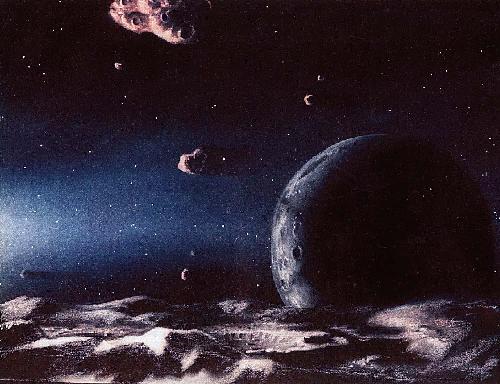Damocloid Paper (pdf file) Astronomical Journal, 129, 530-538 (2005).
David Jewitt. Last updated Aug 2013
 |
 |
|
| Comet | Jewitt | Kuiper |
|---|
| The DAMOCLOIDS |
|---|
Definition
The term has
been loosely applied for some years to refer to any object of asteroidal
appearance moving on a comet-like (eccentric, inclined) orbit. My
specific definition is that
"a Damocloid is any point-source object having a Tisserand Parameter with respect to Jupiter less than or equal to 2".
By this definition, there were 41 Damocloids with decent orbits (orbital arcs greater than 30 days) as of 2011 February 09.
By this definition, there were 53 Damocloids with decent orbits (orbital arcs greater than 30 days) as of 2013 July 31.
Here is a list of the Damocloids with the orbit parameters.
What Are They?
Damocloids are the inactive nuclei of Halley Family Comets.
How Do We Know That Damocloids Are Not Just Weird Asteroids?
On a case-by-case basis, we can often never be sure. However, we can be sure that the Damocloids as a group are related to the comets. This is because
a) some objects identified as Damocloids by the above criterion have subsequently developed comae: they are comets without a doubt
b) the distribution of inclinations of Damocloids is indistinguishable from that of the Halley Family Comets, even though the Tisserand selection criterion does not require that this be the case.
Figure
c) about 25% of the Damocloids possess retrograde orbits, unlike any other asteroids
What Do We Know About the Damocloids?
Just a little.
What Would We Like to Know About the Damocloids?
Damocloid Paper (pdf file) Astronomical Journal, 129, 530-538 (2005).
David Jewitt. Last updated Aug 2013
 |
 |
|
| Comet | Jewitt | Kuiper |
|---|